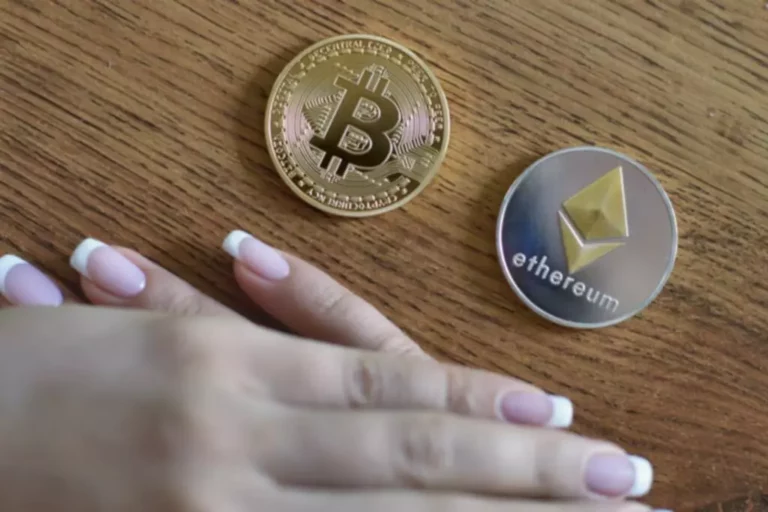With the automated, algorithmic buying and selling provided by crypto liquidity pools, buyers can have their trades executed right away with minimal slippage if liquidity is sufficient. Buyers and sellers are matched immediately, eliminating spreads since there isn’t a order e-book. This system automates itself because customers are incentivized to offer liquidity in exchange for rewards.

All in all, the essence of DeFi lies in its decentralized approach, encouraging financial freedom, transparency, and accessibility for all customers within the crypto space. CEXs rely on a centralized get together to match buy and promote orders and facilitate trades. Order guide is an digital record of all buy and promote orders for a specific asset, with one of the best bids and asks displayed at the prime. All the orders are overseen via the central third celebration, an trade itself.
What’s A Crypto Liquidity Pool?
Unlike conventional exchanges, where trading takes place between buyers and sellers, DEXs use liquidity pools to offer liquidity and execute orders. Defi swimming pools are created and maintained by users who contribute their belongings, receiving liquidity tokens in return. These tokens characterize a share in the pool and can be used to earn charges for transactions that pass by way of the pool. Sushiswap is a decentralized liquidity protocol built on the Ethereum blockchain. It permits customers to trade and supply liquidity for numerous tokens by way of smart contracts.
Efficient fee assortment processes guarantee correct and timely revenue generation. To participate in a liquidity pool and see the way it works for your self, create an account on a decentralized trade like Uniswap. MetaMask is a well-liked choice amongst DeFi users for its ease of use and integration into an online browser. The Brave browser also comes with a built-in web3 pockets that makes it simple for users to access totally different dApps like those used in DeFi.
Execs And Cons Of Liquidity Swimming Pools
Liquidity swimming pools play a crucial position in the decentralized finance ecosystem, enabling seamless buying and selling and facilitating varied monetary activities. By providing liquidity in a liquidity pool, traders can earn buying and selling charges and other incentives while contributing to the expansion and growth of the DeFi ecosystem. However, there are risks and concerns that traders ought to be conscious of, including impermanent loss and sensible contract vulnerabilities. On the one hand, the pools supply immediate, environment friendly token swaps and seamless buying and selling. They empower customers to be liquidity providers, selling decentralization within the crypto market.

Liquidity pools are a revolutionary idea within the DeFi house, allowing for environment friendly, decentralized buying and selling whereas providing lucrative earning alternatives for liquidity suppliers. However, they also include their very own set of dangers, and potential users ought to completely perceive these before participating. As the DeFi ecosystem continues to evolve, we’re likely to see extra innovation and improvements in liquidity pool know-how. Liquidity swimming pools are the spine of many decentralized exchanges (DEXs), representing a paradigm shift in how trades are made and orders are filled. At their core, they are blockchain sensible contracts that lock up funds, making a pool of tokens that customers can commerce against. In conclusion, liquidity pools have revolutionized the DeFi panorama, offering a decentralized and efficient solution to liquidity challenges.
DeFi liquidity pools are decentralized and function with out intermediaries, utilizing sensible contracts to automate trading and asset management. One concept many traders on decrease liquidity trading pairs face is called slippage. Slippage is the distinction between the expected worth and the precise price once the transacted trade is accomplished, which means value could be misplaced for merchants. Because individuals need to convert from crypto to fiat and vice versa, stablecoins are always a hot commodity. They keep away from inherent crypto volatility while nonetheless being crypto assets that provide all the advantages of blockchain expertise.
Advantages Of Liquidity Pools
THORChain is a decentralized trade that has eight supported blockchains, together with Bitcoin. Based on the Cosmos software program development package (SDK), it uses an automated market maker (AMM) mannequin to swap digital assets across blockchain networks in a non-custodial manner. By enabling cross-chain swaps, THORChain empowers crypto traders to maneuver digital property across ecosystems with out relying on centralized entities. There are several interfaces that combine with THORChain’s expertise how do liquidity pools work, including THORWallet. In this Learn Center publish, we’ll stroll you through how liquidity pools energy decentralized exchanges and provide liquidity for trading and other makes use of. In the blockchain space, there are no institutions like JP Morgan or Citadel Securities to that act as a liquidity provider, leaving that responsibility as much as everyday users looking to optimize their ROI.
This algorithm helps handle the cost and ratio of tokens in accordance with demand. This implies that the worth of an asset adjustments relying on its relationship to a different asset within the pool. In this fashion, AMM supplies constant pricing and liquidity, permitting users to commerce belongings with out the necessity for order books or centralized crypto market makers. Therefore, if you deposit your crypto funds into a DeFi liquidity pool, you effectively turn into each ends of a bank. Now, your funds are locked into the liquidity pool for a specified time, and other traders can tap into them, both for cryptocurrency buying and selling between token pairs or borrowing. Raydium is a serious DEX operating on the Solana blockchain, recognized for its high transaction pace and low fees.

First, a smart contract is written, defining pool functionalities like token swapping and costs. Token pairs are then chosen based mostly on market demand, buying and selling volume, and compatibility. Returns for offering liquidity depend on how the pool works and what belongings it holds. Sometimes, you may have to offer what’s generally identified as “multi-asset liquidity,” which means you must add each belongings in a pool. For example, to supply liquidity to a ATOM/USDT pool, you may have to deposit equal amounts of each ATOM and USDT.
It relies on liquidity pools to facilitate trading and liquidity provision on the Solana network, offering customers a seamless buying and selling expertise. Centralized exchanges relied on order book and crypto market makers (MMs) to take care of liquidity, but as DeFi grew in popularity, there was a need for more efficient and decentralized solutions. Liquidity pools emerged as an progressive method to eliminate intermediaries and provide prompt liquidity via AMMs. And of course, this finally permits customers to delve into many of the trustless applied sciences being constructed on Bitcoin and different blockchains right now. If you have been to change USD for EUR, a market maker like JP Morgan can be the middleman that may give a quote for ask and bid costs as well as provide liquidity.
Liquidity Swimming Pools In Defi?
In conventional trading, a CEX is one which facilitates transactions and ensures that trades will go as meant. Yes, anybody can become a liquidity provider by depositing crypto belongings into a liquidity pool. These belongings might be any pair of tokens, including stablecoins, that are cryptocurrencies designed to reduce worth volatility. Liquidity pools are crucial in facilitating seamless trading and funding in DeFi protocols. Liquidity is available by pooling funds from multiple participants, making certain uninterrupted buying and selling and lowering slippage.

The TVL of various liquidity pools can vary significantly, with some swimming pools reaching lots of of hundreds of thousands and even billions of dollars in value. There is an answer for this, called “liquidity pools”, which allows for monetary exercise in decentralized crypto platforms. In this text, we dive into the world of liquidity pools, exploring their significance and shedding mild on the main platforms that supply fund pooling companies. DeversiFi Protocol stands tall as a number one liquidity protocol, empowering users with unparalleled buying and selling capabilities. It harnesses the facility of decentralized finance to supply a seamless and safe buying and selling experience.
When DEXs have been first invented, they encountered liquidity problems as they tried to imitate traditional market makers. Decentralized exchanges (DEXs) use liquidity swimming pools in order that merchants can swap between totally different property throughout the pool. When traders present liquidity in a liquidity pool, they deposit an equal value of two or more belongings into the pool, sometimes in a 50/50 ratio. In return, they obtain liquidity provider (LP) tokens, which represent their share of the pool’s property and may be redeemed at any time for the underlying property. A liquidity pool is a crowdsourced pool of cryptocurrencies or tokens locked in a sensible contract that is used to facilitate trades between the property on a decentralized exchange (DEX). These swimming pools are important for the smooth functioning of DEXs, as they guarantee that there is all the time adequate liquidity out there for buying and selling.
This may find yourself in buys being executed at greater costs and sells being executed at decrease prices. More liquidity also means quicker transactions, as there are extra funds to go round. To fully understand what a liquidity pool is, we have to be clear concerning the significance of liquidity itself. Without out there liquidity, it’s much more durable to purchase and promote assets, with doubtlessly either aspect seeing unfavorable value situations based on demand. Liquidity swimming pools are typically composed of two or extra belongings which are paired collectively in a selected ratio, such as 50% ETH and 50% DAI.
Layer 2 options characterize a promising future improvement for addressing scalability challenges in crypto. By enabling off-chain transactions and using protocols like Lightning Network, they enhance transaction throughput and cut back fees. However, implementing and adopting these solutions on a big scale requires widespread consensus, user schooling, and seamless integration with current infrastructure. Overcoming these challenges will pave the https://www.xcritical.com/ way for a more scalable and efficient crypto ecosystem. This protocol optimizes liquidity provisioning by utilizing convex tokens, unlocking extra rewards and incentives. By offering a seamless expertise and selling sustainable liquidity, Convexity Protocol has gained recognition as a leading platform throughout the thriving ecosystem of liquidity protocols.
Aave’s innovative features have contributed to increasing DeFi’s capabilities, introducing new prospects for financial services. AMMs make the most of these liquidity swimming pools to calculate prices based on the ratio of tokens within the pool, ensuring honest and environment friendly trading. Compared to traditional liquidity sources, some great advantages of Liquidity pools in DeFi platforms are miles apart.
